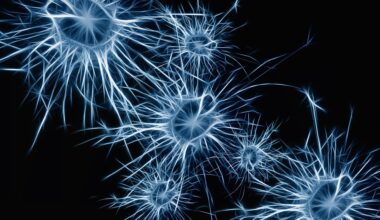Concussion affects the developing adolescent brain and may delay key cognitive processes, hampering the brain’s ability to change focus and pay attention. New research from Dr. Naznin Virji-Babul’s team, published today in the journal ASN Neuro, shows that concussion changes the way that different neural networks interact, stalling the brain in a state of cognitive inflexibility.
Even at rest, the brain is continuously active, processing and exchanging information. This active interaction between different parts of the brain is necessary for a person to be aware of her surroundings, or to be able to focus on his work or switch between tasks. In the concussed brain, this spontaneous exchange between brain regions is hampered, causing difficulties with concentration or shifting attention. In the adolescent brain, this has long-term implications for growth and development, especially in the prefrontal cortex where functions like learning, perception, and memory are processed. In the short term, this can mean an inability to focus on academic tasks and homework, or to tune out distractions or focus on urgent stimuli such as while driving.
“We’re seeing a correlation between injury to the prefrontal cortex and impairment of higher cognitive function,” says Dr. Angela Muller, first author on the paper. “We’ve demonstrated that concussion is causing micro tears in the brain’s white matter, which is preventing the brain’s networks from connecting. The person is effectively ‘stuck’ in a state of inattention.”
The team looked at a small group of young athletes in recovery from recent concussion, using functional magnetic resonance imaging (fMRI) to see how different groups of neurons interact. In a healthy brain, fMRI detects activity and areas of the brain “light up” to show interaction between basic and higher cognitive networks. In injured brains, imaging shows that these networks halt communication – it is as if they are spinning, like an application failing to load.
“What’s important is the time the brain stays stuck in a particular state,” explains Dr. Muller. “A healthy brain is dynamic, with different areas of the brain interacting smoothly and subtly.”
“For teenagers, this is particularly concerning,” says Dr. Naznin Virji-Babul. “These findings emphasize the importance of concussion prevention in youth sports, but also the need to ensure a full recovery before returning to the ice or to the field. An athlete struggling with focus and attention will be at higher risk of subsequent concussions, and repeated concussions may make kids more at risk for cognitive decline later in life. ”
This study is among the first to fill gaps in researchers’ understanding about the relationship between symptoms of concussion and the changes in structure and function that occur as a result of the injury. The researchers will next look at the role of exercise and brain stimulation in “rebooting” cognitive processes and reconnecting lines of neural communication.
“We want to be sure we’re protecting kids’ brains, but still encouraging them to be active,” says Dr. Virji-Babul. “For those who have recently experienced a concussion, we need to get their brains working normally as soon as possible.”


